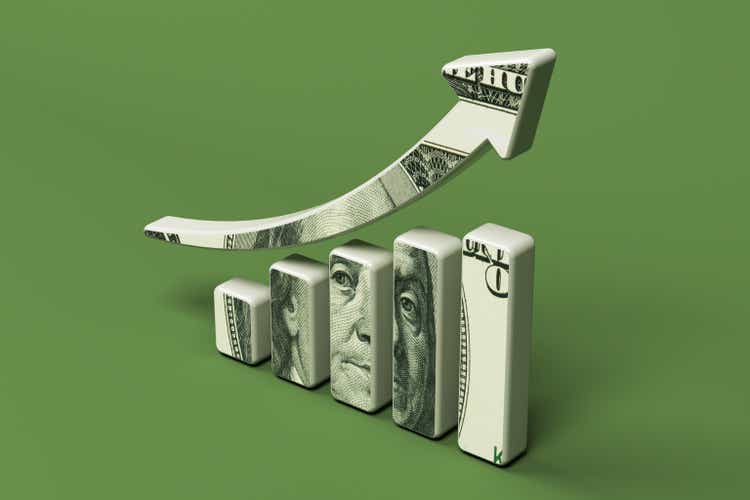Baris-Ozer
SandRidge Energy (NYSE:SD) has resumed oil production growth, as announced in its recent quarterly update. This is momentous considering its heavily discounted valuation. After being forced into bankruptcy and struggling after emergence, the company’s building cash position is now accompanied by oil production growth, allowing cash flow to increase despite weaker commodity prices in Q3 vs Q2.
There were five elements of SandRidge’s recent quarterly report that are worth highlighting, before further discussion below. These are excerpted from the press release with my commentary, and I highlighted them on Twitter the afternoon of the announcement:
1) Generated Adjusted EBITDA of $54.8 million in the third quarter compared to $53.7 million in the prior quarter. Higher EBITDA despite lower commodity prices in Q3 vs Q2 is noteworthy.
2) Third quarter 2022 production of 17.8 Mboe/d was consistent with the last three quarters as the Company continued its well reactivation program and began bringing new wells online as part of its previously announced capital development program. Flat overall production with substantial FCF is great.
3) SandRidge entered into commodity derivative contracts for natural gas. The commodity derivative contracts have an average strike price of $8.39 per MMBtu with a positive mark-to-market asset value of $4.0 million as of September 30, 2022. Profitable hedging is uncommon, and value add.
4) Good new wells: SandRidge operated one drilling rig in the third quarter and successfully drilled & completed three wells in the core of the NW Stack – which helped to increase oil production by more than 25% compared to the prior quarter. Resuming oil growth while growing the net cash balance is impressive.
5) Flattened PDP decline rate: The well reactivation program has helped flatten expected annual PDP decline to an average of approximately 8% over the next 10 years. A low decline rate means low capital intensity, which can allow for high FCF, as seen by the net cash increase despite the active capital program and growing oil production.
This is an impressive set of accomplishments for a quarter for any oil and gas company. It is particularly impressive considering the low valuation SandRidge trades at – under 3x EV/EBITDA. Especially in the context of SandRidge’s disclosed 8% PDP decline rate – the amount its production would decline if it didn’t invest capital to sustain that production. 8% compares favorably with peers with decline rates typically in the 20-40% range.
As SandRidge continues to build its cash balance, up to $240 million on Sept 30th vs a $680 million market capitalization, pressure continues to mount on the company and its board to return capital to shareholders. This remains the most frequent complaint or concern expressed by former and current shareholders.
With the current board having been elected in a proxy battle led by Carl Icahn in 2018 on the promise to liquidate the company and return the proceeds to shareholders. As reported at the time, “In SandRidge proxy fight, Icahn’s reputation for turnarounds at stake” and this hoarding of cash seems contrary to Icahn’s promises at the time as well as his numerous calls for other companies holding cash to return it to shareholders via buybacks or dividends.
This tension and accompanying discounted valuation could mean opportunity. The cash balance has grown by over $140 million so far in 2022. It is likely increasingly hard for other activist fund managers and other oil and gas companies to ignore. With Icahn owning less than 14% of the company, and with the board owning less than 1% of the company, it seems to be a matter of time.
On the recent conference call, management disclosed an estimated proved developed reserve value of over $800 million, which along with the $240 million cash balance implies a value of over $1 billion. This excludes any value for infrastructure or the $1.6 billion NOL, which could be used to shield taxes in certain circumstances and are increasingly valuable in a rising commodity price and profitability environment. And it excludes the potential development value of hundreds of thousands of acres of land, which apparently include numerous wells that generate 60%+ rates of return and are allowing the company to grow oil production concurrent with its net cash balance.
As the tension builds, so does the cash position and the company’s profitability. The discount is difficult to ignore, and I remain heavily invested in the company for now. With shares up more than 10x from the below $2 share price at the time I first highlighted it on Seeking Alpha, the company is still misunderstood and still offers substantial commodity price upside at a discount to peers.


Be the first to comment